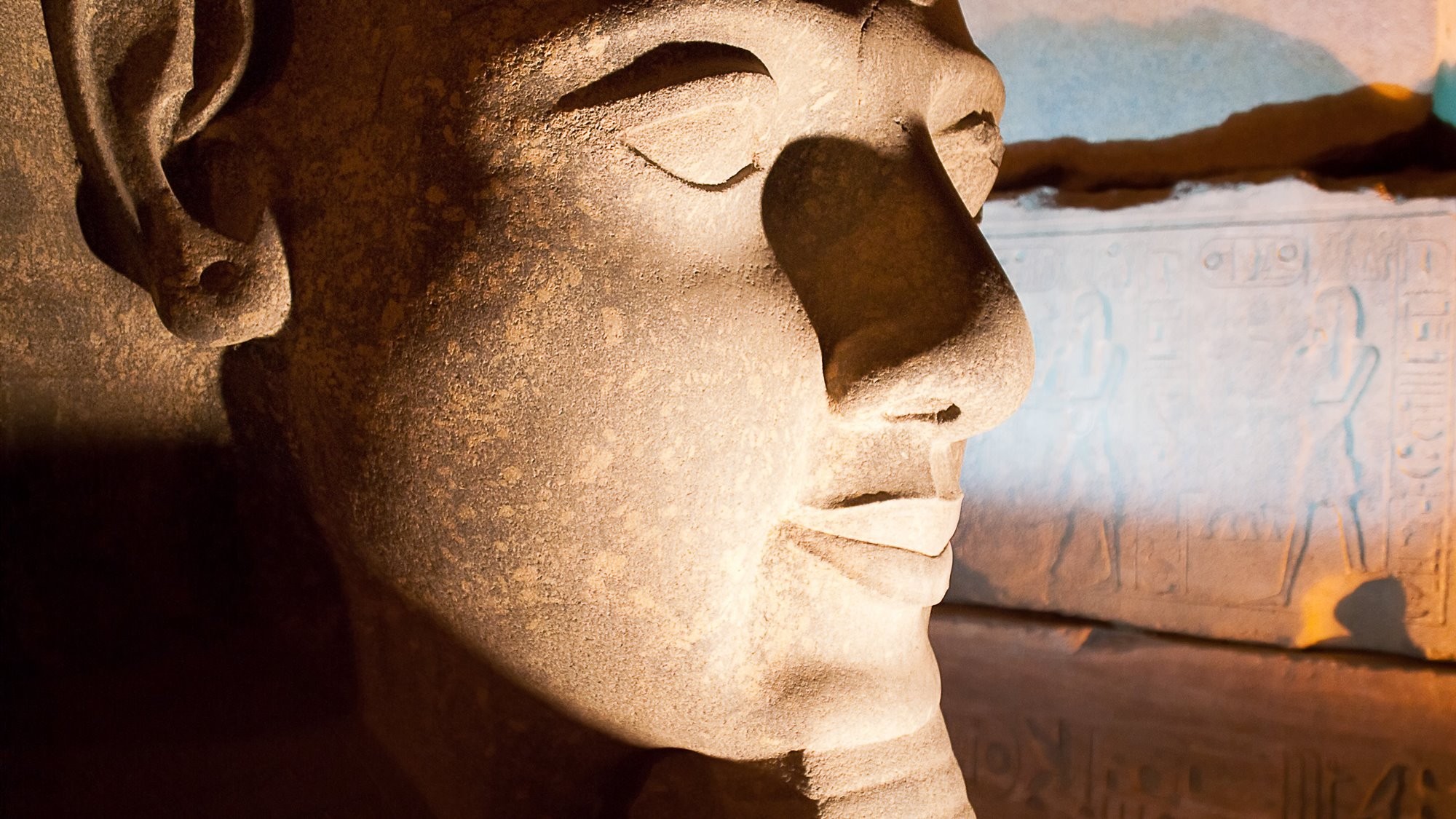Roman Sites in Germany
Running diagonally across Germany is the Limes Germanicus, a defensive boundary of natural and built features that separated the Roman provinces from the Germanic tribes to the north. Today, the ruins of forts and reconstructed watchtowers are popular visitor attractions. South of the German limes were many important Roman towns and provincial capitals, today’s Xanten and Regensburg, Trier and Cologne. A number of Germany’s older towns and cities were established by the Romans. Between these towns are the remains of rural estates and temples, thermal baths and aqueducts.
This page lists the Roman archaeological sites in Germany, the ruins, the forts of the Limes, the settlements and towns. It is a part of our Guide to the Romans in Germany, a section in our Guide to the Roman World. It is produced by Thomas Dowson, an archaeologist and the founder of Archaeology Travel. Read more about this website, our values and mission, and how we produce these guides.
Create Your Itinerary & Travel Lists
If you are planning a trip to Germany you can use our itinerary builder with the list of sites below to create your own travel lists (such as places you have been to, places you would like to visit) and itineraries. These can also be shared with your friends, privately and on social media. To make use of this feature, however, you will need to login or register as a new user. Registering to use our itinerary builder is free of charge (find more details on How to Use this Website) . The list below only includes Roman archaeological sites in Germany. Find Roman sites and museums in other countries, and/or more sites and museums in Germany.
Archäologische Park Ostkastell - Roman Fort
The Archaeological Park of Ostkastell (east castle) has been developed on the site of a Roman fort built on the Limes. The fort was built in 160 AD and covered an area of 1.6 ha, housing a garrison of between 150 and 200 men. The site has been known since the mid 19th century at least, with the first excavations taking place at the end of that century. They continue until very recently. Some of the features of the site have been left exposed, including the foundations of a bath house. The west gate has been reconstructed. Interestingly, the fort was located just beyond the Limes, technically outside the Roman Empire.

Boppard Roman Fort
The centre of present-day Boppard on the Rhine River is built on the remains of a mid 4th century AD Roman fort, named Bodobrica. This was one of the most important military camps on the Middle Rhine. The settlement was founded by the Celts, named Baudobriga. The size attests to the fort’s importance, at 308 × 154 m covering an area of 4,7 ha. The walls were 3 metres thick facing land sides, and 2,5 metres thick facing the Rhine side, reaching to a height 9 m with 20 towers – this was a formidable fort and is today one of the best preserved Roman forts in Germany.

Cambodunum Archaeological Park
At the Cambodunum Archaeological Park in Kempten, visitors can explore the Roman town of Cambodunum, the administrative centre of the Rhaetia province during the 1st century AD. Many features of the town are visible in the park. The foundations of the forum and basilica are set out in the grass. A small thermal bath has been excavated and enclosed in a protective building. A number of features have also been reconstructed, including an impressive Gallo Roman temple. Parts of the site are freely accessible.

Cologne - Colonia Claudia Ara Agrippinensium
Colonia was always an important town for the Romans; the capital of the province of Germania Inferior and later the capital of Germania Secunda. The regional headquarters of the military in the region was based here. There are a number of features to see in the city, including sections of the wall and towers. The Roman museum, exhibitions are currently in a temporary location, was built on the foundations of a townhouse and displays its mosaic floor of Dionysius.

European Archaeological Park of Bliesbruck-Reinheim
The German-French border between Gersheim (Saarland) and Bliesbruck (Moselle) has a wonderful concentration of Iron Age and Roman archaeological sites. Consequently the European Archaeological Park of Bliesbruck-Reinheim is a cross-border venture between the two countries. The park is well set up for visitors. On view are excavations and reconstructions of Iron Age and Roman villages, an Iron Age tomb and a Roman villa.

Limes Watch Tower, Lorch
Just to the east of Lorch, near the 12th century Lorch Monastery, what is called the Upper German Limes meets the Raetian Limes. And almost at that intersection stands a reconstructed timber watchtower, with a small section of the palisade that would have demarcated the border. This is the spot where a stone tower is supposed to have stood. The reconstruction is not historically accurate, as there is no evidence of wooden towers in this part of the Limes. Nevertheless, it gives an idea of the watchtowers, and the view is spectacular. Visitors are able to climb the tower to the landing.

Limeskastell, Pohl
The replica of the Limes fort at Pohl is based on excavations and up-to-date research. The Roman fort was on the northern border of the Empire, and was built around 100 CE. Today this open air museum is part of the Upper Germanic-Raetian Limes UNESCO World Heritage Site. The reconstructed buildings within the earth and wood rampart house permanent exhibitions showing what the living conditions at the fort were like for soldiers, as well as displaying artefacts from nearby Roman sites.

LVR-Archaeological Park Xanten
The archaeological park on the edge of the medieval town of Xanten was built on the ruins of the Roman settlement Colonia Ulpia Traiana, on the banks of the Lower Rhine. Founded in 70 AD, the Roman town was the second most important commercial post in Germania Inferior, after Cologne. In 275 AD it was completely destroyed by Germanic tribes, and rebuilt as Tricensimae. That too was destroyed by local tribes. A number of features have been reconstructed in the park, including an amphitheatre, bath house and defensive wall.

Nennig Roman Villa
In 1852 a farmer came across tesserae while he was digging a pit. This led to the discovery of the Roman villa, and one of the most outstanding mosaic floors north of the Alps. At 15.65 x 10.30 metres, this mosaic is certainly one of the biggest. The mosaic depicts the various activities that take place in the amphitheatres, including a somewhat graphic scene of gladiators fighting each other, men hunting wild animals, as well as animals hunting other animals. Also, on the edge of town there is an Iron Age tumulus.

Porta Praetoria, Regensburg
Casta Regina was the Roman name for a 2nd century AD military fort on the Danube River, a city we know today as Regensburg. Very little of this fort has survived. One feature being a gate from the northern walls of the fort; one of the few surviving Roman gates north of the Alps. The stone from much of the Roman fort, like elsewhere, was used in the construction of later buildings. The reason the north gate survived is because it was partly integrated into the Bishop’s court in the mid 17th century. The distinctive Roman masonry can still be seen from the street.

Roman Cavalry Fort, Aalen
This cavalry fort, situated along the Rhaetian Limes, was the largest such fort in Europe north of the Alps. The fort was built in the mid 2nd century CE, and abandoned by circa 260 CE. Over 1,000 soldiers of the Ala II Flavia Miliaria were stations here. As part of the defensive system along the northern edge of the Roman Empire in what is upper Germany today, the Rhaetian Limes is a listed UNESCO World Heritage site. Next to the ruins of the fort is one of the biggest Roman museums in Germany.

Roman Mainz - Mogontiacum
What started out as a strategically positioned Legionary base developed into a regional administrative and military centre. Mogontiacum often served as a military base for Roman incursions into the north and east of Germany. Its position on the Rhine, at the mouth of another major navigable river – the Main, made the town very attractive to traders who set up a port. Besides a few good museums, there are a number of Roman ruins to see in Mainz, including the remnants of an aqueduct, and the foundations of a temple.

Roman Mine, Meurin
Vulkanpark is a rural geo-attraction focussed on a volcanic region in the eastern Vulkan Eifel area of Germany. A series of self-guided routes enable visitors to explore volcanology, archaeology and industrial history – and understand how the exploitation of volcanic rock has shaped the landscape since Roman times. Besides the Roman mine, the routes also take in a section of Roman walls near the town of Mayen and two Roman mound graves just outside the towns of Nickenich and Ochtendung.

Roman Trier - Augusta Treverorum
Founded by the Romans around 16 BC Trier is said to be the oldest city in Germany. By the 4th century AD, as one of the tetrarchy, it was one of the largest cities in the Empire, and known as ‘the second Rome’. Trier also has some extremely well preserved Roman remains. These include a bridge over the Moselle, an amphitheatre, bath houses and the basilica built for Constantine at the beginning of the 4th century AD. Together with two medieval cathedrals these Roman monuments have been included on the UNESCO list of World Heritage Sites.

Saalburg Roman Fort
The Roman fort of Saalburg, also Römerkastell Saalburg, was a frontier fortification on the Upper German Limes just northwest of Bad Homburg, Hesse. The earliest excavations were carried out in the 1850s. In 1897 Kaiser Wilhelm II ordered a reconstruction of the fort, the result a near complete reconstruction of a Roman fort. Displays in the buildings use artefacts from the fort to give an idea of life in Roman times here. There are also artefacts from nearby sites such as the exquisite gilded bronze head of a horse from Waldgrimes.


















